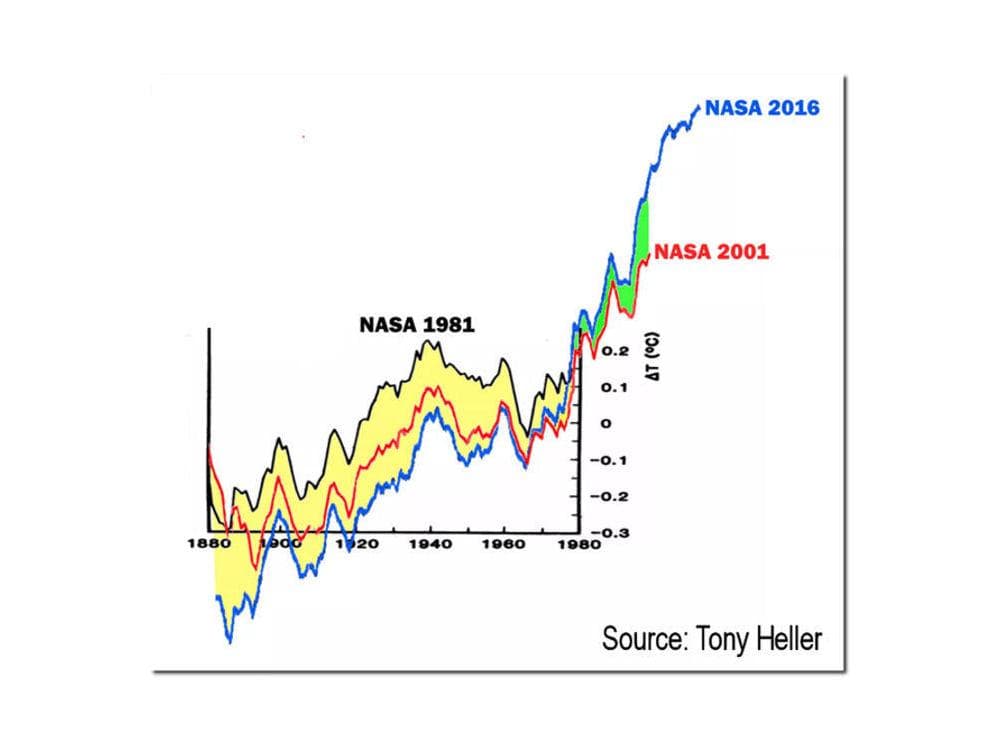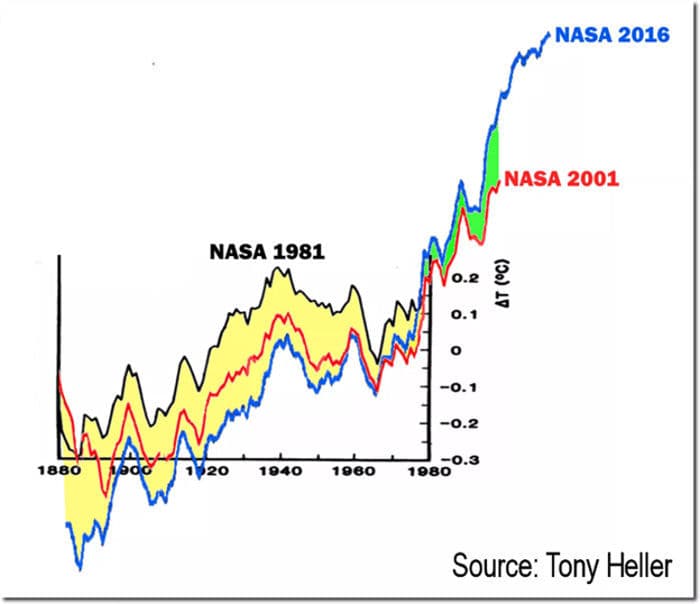The NASA Goddard Institute for Space Studies recently issued a news release regarding new studies of the accuracy of the GISTEMP global temperature anomaly product. Based on the results of these studies, NASA GISS currently estimates that their estimates of the estimated global annual average near-surface temperature is “ are likely accurate to within 0.09 degrees Fahrenheit (0.05 degrees Celsius) in recent decades, and 0.27 degrees Fahrenheit (0.15 degrees C) at the beginning of the nearly 140-year record”.
This news release is interesting on several levels; and, it appears to raise more questions than it answers. The release identifies the estimated global average temperature increase since 1880 at 2°F, ignoring any “significant” decimal places. The estimated two “significant” decimal place accuracy of 0.09ºF over recent decades, conventionally presented as 2+/- 0.09°F, is approximately +/- 5%. The estimated two “significant” decimal place accuracy of 0.27°F at the beginning of the temperature anomaly record, conventionally presented as 0+/-0.27°F, represents an undefined percentage error.
Estimating the accuracy of an estimated temperature anomaly record requires comparison to an established factual temperature anomaly record, in this case a temperature anomaly record of at least two decimal place accuracy. Unfortunately no such established factual temperature anomaly record exists. NASA GISS does not state the temperature anomaly record used for its GISTEMP accuracy estimates in the news release.
NASA GISS does reference a comparison to the surface temperature record provided by the AIRS instrument aboard the NASA Aqua satellite. However, the AIRS instrument measure surface temperature, rather than the air temperature approximately 2 meters above the surface. Therefore, while AIRS might be useful for confirming trends, it is unsuited to verifying measurements. The AIRS comparison is only applicable to the period since 2003, when the AIRS instrument was placed into orbit.
NASA GISS did not mention whether it had compared the GISTEMP temperature record for the contiguous United States with the temperature record provided by the US Climate Reference Network over the period for which USCRN data are available. While this is neither a long nor a global record, it is a highly accurate, unadjusted near-surface temperature record which could have been used to “ground truth” the GISTEMP estimate for the contiguous United States for the same period.
It should be noted that NASA GISS produces GISTEMP using “adjusted” temperatures provided by NOAA; and, that NASA GISS has ‘readjusted” these “adjusted” temperatures numerous times. The graph below shows plots of the GISTEMP global annual temperature anomaly presented in three different years over the past 35 years. Note that the anomaly estimates have been reduced in the early years and increased in the later years of the temperature record. The cumulative effect of these “readjustments” increased the reported global temperature anomaly over the period by approximately 0.4°C (~0.7°F). These “readjustments” represent approximately one third of the total reported anomaly estimate over the period.

The issues with GISTEMP point again to the desirability of establishing a global land surface climate fiducial reference measurements network.

